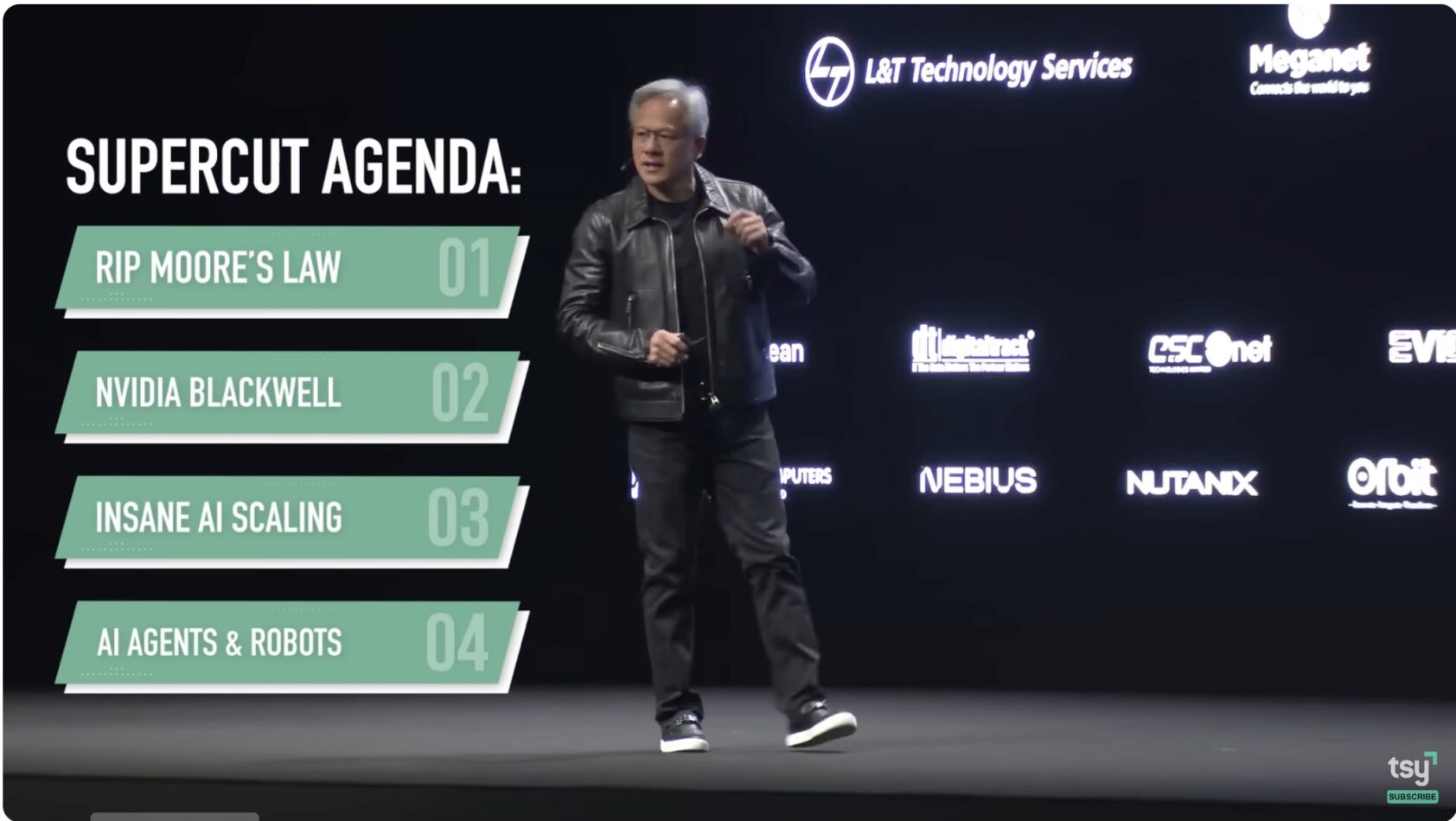Revolutionizing Computing with Jensen Huang
NVIDIA CEO Jensen Huang recently delivered a groundbreaking presentation that left the tech world in awe. Traditional CPU scaling has plateaued, NVIDIA is pioneering the future with accelerated computing. This revolutionary approach not only promises to transform industries but also redefine how we understand and interact with technology.
A New Era of Computing
For decades, Moore’s Law provided a predictable path for the advancement of computing power. However, as we reach the limits of CPU scaling, the traditional free ride has ended. This shift necessitates innovation beyond conventional methods. Enter NVIDIA, with a vision to accelerate software and redefine the computing stack from the ground up. By leveraging their CUDA architecture across diverse industries, NVIDIA has achieved performance enhancements that were once thought impossible.
The Power of GPUs
NVIDIA’s introduction of GPUs transformed real-time computer graphics and set the stage for accelerated computing to impact numerous fields. From semiconductor manufacturing to quantum computing, NVIDIA’s technologies are accelerating applications by factors of 20, 30, or even 50 times. This leap forward is made possible through a deep collaboration with software developers and industry partners, fostering a dynamic ecosystem of accelerated computing.
Machine Learning: The Software Revolution
The traditional method of software development—coding algorithms to process input data—has been eclipsed by machine learning. Jensen Huang emphasizes this paradigm shift, where machines now learn from vast datasets to create predictive functions. This evolution from Software 1.0 to Software 2.0 signifies a move towards artificial intelligence, with neural networks thriving on NVIDIA GPUs.
The Blackwell System
At the heart of NVIDIA’s innovation is the Blackwell system, a monumental leap in computing capability. Designed for massive data analysis, Blackwell represents the pinnacle of GPU technology, featuring interconnected GPUs that function as a single, colossal entity. This architecture supports advanced tasks like AI model training, inference, and complex simulations, pushing the boundaries of what is possible in data processing and artificial intelligence.
FAQs
What is accelerated computing?
Accelerated computing involves using specialized hardware and software to perform tasks more efficiently than traditional CPU-based computing. NVIDIA’s GPUs and CUDA architecture are leading examples of technology driving this innovation.
How does machine learning differ from traditional coding?
Machine learning allows computers to learn patterns from data and make predictions, unlike traditional coding where algorithms are explicitly programmed by humans. This shift enables the creation of more adaptive and intelligent systems.
What industries benefit from NVIDIA’s technologies?
NVIDIA’s accelerated computing solutions impact a wide range of industries, including healthcare, automotive, finance, and more. Their technologies are crucial for tasks like AI model training, real-time data processing, and complex simulations.
Text to Image Prompt Generator from URL
Transform URLs into AI image prompts with FlowHunt. Visualize content, enhance creativity, and boost engagement effortlessly!
Nvidia’s CES 2025 Keynote: A Token Revolution and the Dawn of Physical AI
Explore Nvidia's CES 2025 keynote: AI tokens, RTX Blackwell series, and Cosmos platform, revolutionizing technology and Physical AI.
Exploring Computer Use and Browser Use with LLMs
Explore AI evolution with FlowHunt! Dive into AI reasoning, GUI automation, & future tech shaping human-computer interaction. Read more now!





